Persian stews are at the heart of every home-cooked Iranian meal, bringing together rich flavors, warm spices, and slow-cooked magic. In this guide, we’ll dive into the best Persian stews, show you how to cook them at home, and share expert tips for serving them like a pro.
Short Overview of Persian Stews
From herb-packed Ghormeh Sabzi to nutty Fesenjan, Persian stews offer a variety of flavors that cater to every palate. These comforting dishes are perfect for cozy dinners, festive occasions, or when you just want a taste of authentic Iranian home cooking.
Key Tips for Cooking the Best Persian Stews at Home
Use the Right Spices for Each Stew
Every Persian stew has its own flavor profile. Turmeric, cinnamon, and cumin work beautifully for meat-based stews, while dried lime and saffron shine in tangy, sour stews. Adding spices at the right time makes all the difference in aroma and taste.
Saute Tomato Paste for Richer Flavor
Sauté tomato paste in a little oil before adding it to your stew. This removes the raw taste and enhances color and depth. Avoid overcooking it once in the stew — it won’t improve the color and may even dull it.
Add Lemon Juice at the End
For a fresh, tangy kick, add lemon juice or other acidic ingredients at the very end of cooking. Heat them too long, and the bright flavor and color may fade.
Cook Slowly for Better Texture
Low and slow cooking helps Persian stews develop their signature richness. A partially covered pot allows water to evaporate gradually, thickening the stew perfectly.
Adjust Salt and Sourness Carefully
Too salty? Drop in a raw potato to absorb excess salt. Too sour? Add a touch of sugar for balance.
Serve with Fluffy Saffron Rice and Tahdig
Persian stews reach their full potential with soft, fragrant saffron rice and crispy tahdig. This combination is essential for the complete experience.
Use Broth for Extra Depth
Adding a splash of meat or vegetable broth not only thickens the stew but also enhances the flavor and nutrition.
Handle Stews Gently
Stir carefully to preserve the shape and texture of the ingredients. Vigorous stirring can break down vegetables and meat.
Which Persian Stew Should You Try First?
Ghormeh Sabzi – Iran’s Favorite Herb Stew
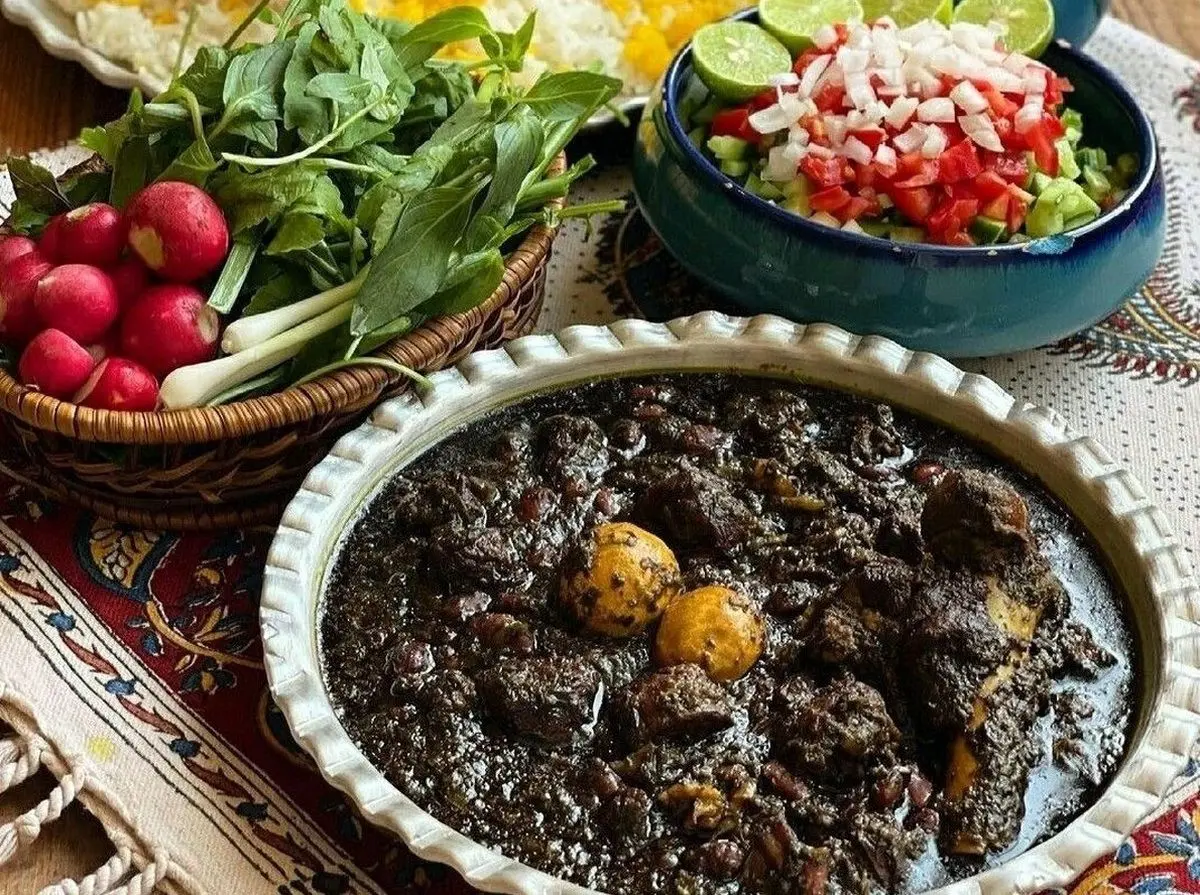
No list of Persian stews is complete without Ghormeh Sabzi. This iconic herb stew is made with a mix of parsley, coriander, chives, spinach, dill, and fenugreek, slowly simmered with pinto beans, chunks of lamb or beef, and dried limes (limoo amani). It’s rich, tangy, and full of depth — especially when served with fluffy saffron rice. This dish is a true symbol of comfort in Iranian cuisine.
Khoresh Gheimeh – Split Peas, Dried Lime, and Crispy Fries
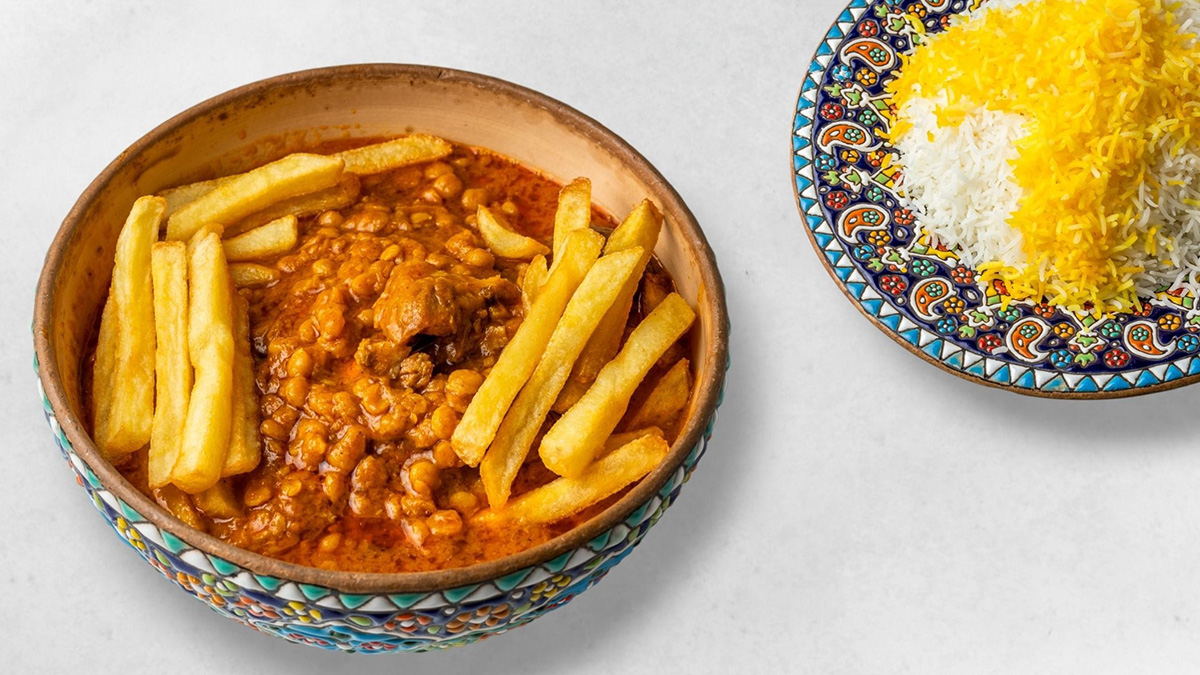
Khoresh Gheimeh is a classic Persian stew made with tender chunks of lamb or beef, yellow split peas, and dried limes (limoo amani). It’s slowly simmered to develop a tangy and savory flavor. Traditionally, it’s topped with golden French fries, adding both texture and nostalgia.
Fesenjan – A Rich Stew with Walnuts and Pomegranate Molasses
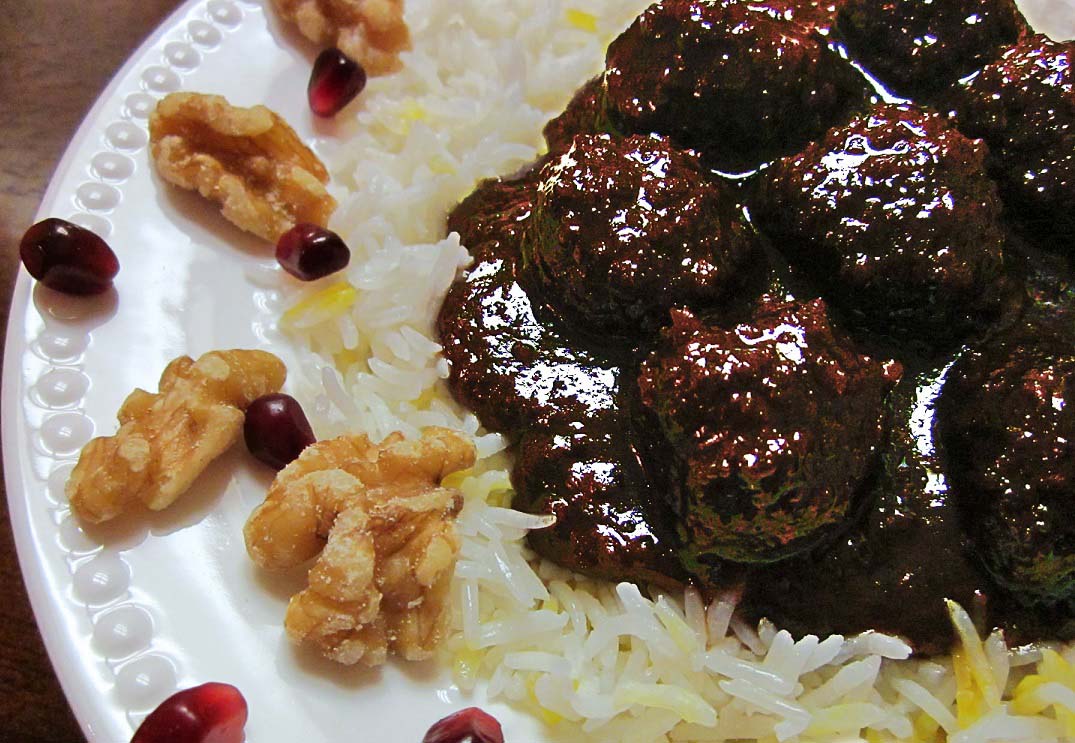
Fesenjan (or Fesenjoon) is one of the most elegant and complex traditional Persian stews. It’s made with ground walnuts and pomegranate molasses, creating a thick, dark sauce that’s both sweet and tangy. While it’s often cooked with chicken or duck, many families also love it with small meatballs made from seasoned ground beef or lamb. Each version brings out the unique richness of the stew — making Fesenjan a favorite at Persian holiday tables and special gatherings.
Ghalieh Meygoo – Spicy Shrimp Stew from Southern Iran
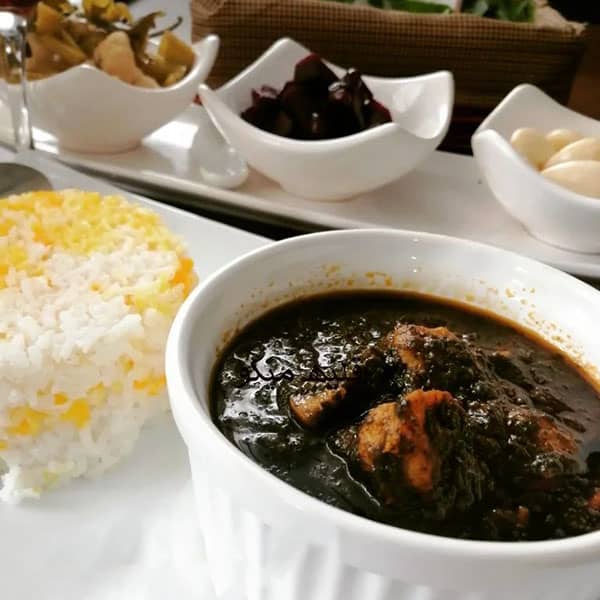
Want something with a kick? Meet Ghalieh Meygoo — a fiery, tangy shrimp stew from southern Iran. Cooked with lots of fresh coriander, fenugreek, garlic, and tamarind paste, it’s bold and full of personality. If you’re a seafood lover, this is one of the best Persian stews to try.
Khoresh Bademjan – Comfort in Every Bite
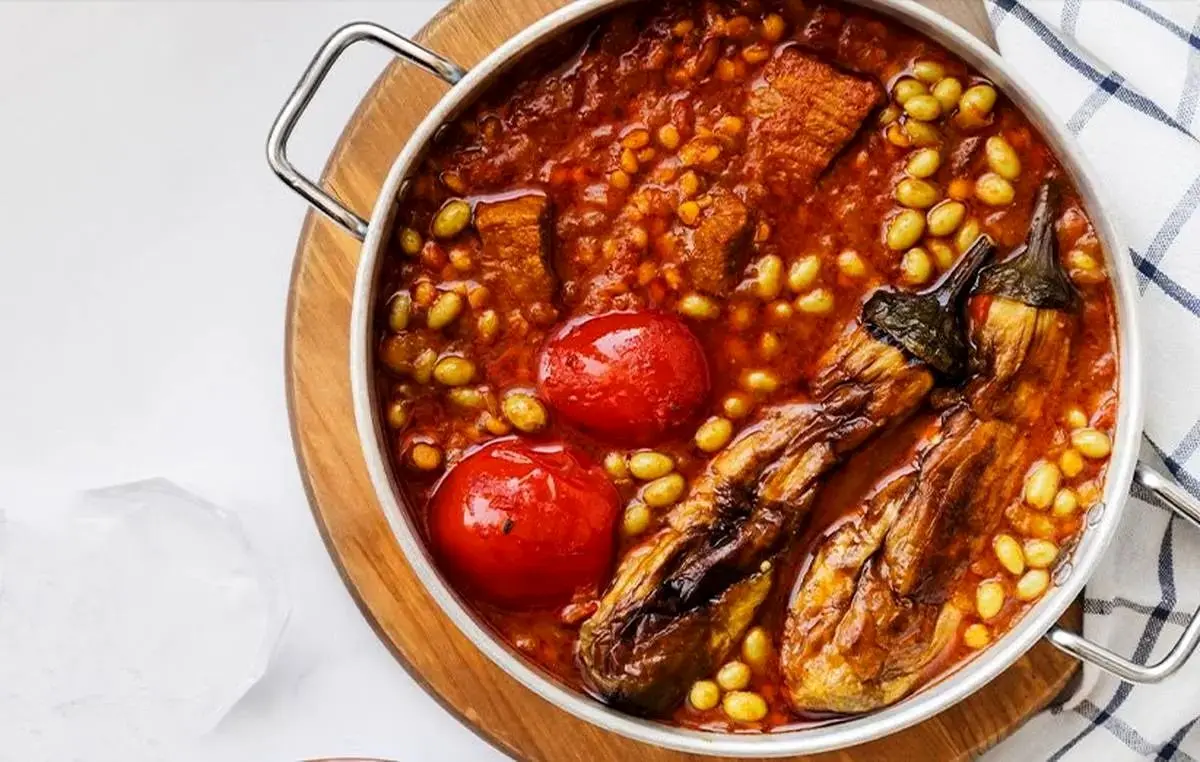
Tender eggplant, meat, saffron, and tomato come together to create a stew that pairs beautifully with fluffy saffron rice and golden tahdig.
Khoresh Bademjan Recipe
Essential Ingredients That Make Persian Stews Unique
Persian stews are incredibly diverse, from hearty herb and meat combinations to sweet nutty sauces and even seafood-based stews. Here’s a breakdown of the main ingredients that give each stew its distinctive flavor:
Fresh Herbs & Greens
- Parsley, cilantro, fenugreek, spinach, dill, celery
- Found in classic stews like Ghormeh Sabzi and Celery Stew (Khoresh Karafs)
- Fresh herbs bring vibrant aroma and deep flavor
Vegetables & Fruits
- Carrots, eggplants, quince, plums, tomatoes, onions
- Featured in Khoresh Bademjan, Khoresh Havij Alu, Khoresh Beh, and other vegetable-forward stews
- Adds natural sweetness, color, and texture
Legumes & Nuts
- Split peas, pinto beans, walnuts, almond slivers, barberries
- Common in Khoresh Gheimeh, Ghormeh Sabzi, Fesenjan, Khoresh Kholas (Haval Khoresh), and Khoresh Khalil (Khoresh Khalil with almonds/barberries)
- Provide richness, protein, and hearty texture
Spices & Flavor Enhancers
- Turmeric, cinnamon, cumin, saffron, dried lime, pomegranate molasses, black pepper, red pepper, curry powder
- Every stew uses a unique combination for balance of savory, sweet, and sour
Seafood & Aromatics
- Fresh shrimp, fish, garlic, coriander, tamarind paste
- Star ingredients in southern Persian stews like Ghalieh Meygoo
- Add bold, bright, and slightly tangy flavors to the Persian stew family
Serving & Pairing Ideas for the Best Persian Stews
- Saffron Rice: Soaks up the sauce and balances flavors
- Tahdig: Crispy rice crust for the ultimate experience
- Side Salads & Drinks: Shirazi salad or doogh complements richness
- Bread Lovers’ Option: Warm Persian flatbread works well with stews like Khoresh Gheymeh or Fesenjan
FAQ: Common Questions About Persian Stews
What are the most popular Persian stews?
Ghormeh Sabzi, Khoresh Gheimeh, Fesenjan, Ghalieh Meygoo, and Khoresh Bademjan — each with its unique flavor and history.
What makes Persian stews different from other stews?
The combination of herbs, spices, and a balance of savory, sweet, and sour flavors. Ingredients like dried lime, pomegranate molasses, and saffron give them a distinctive taste.
Can Persian stews be made vegetarian?
Absolutely! for Khoresh Gheymeh, mushrooms can replace meat. The full vegetarian Khoresh Gheimeh recipe is available on its dedicated page.
Are Persian stews healthy?
Yes! With fresh herbs, legumes, nuts, and balanced use of meat, Persian stews offer a nutrient-rich, wholesome meal.

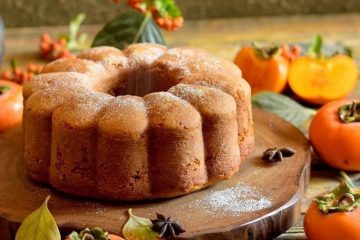

Pingback: Ghalieh Mahi (Persian Spicy Fish Stew) - Mesry Tasty
Pingback: khoresh gheymeh bademjan Recipe (Yellow Split Peas and Eggplant Stew) - Mesry Tasty
Pingback: How To Brew Saffron? - Mesry Tasty
Pingback: Fesenjan Recipe With Meatballs| Persian Walnut & Pomegranate Stew - Mesry Tasty